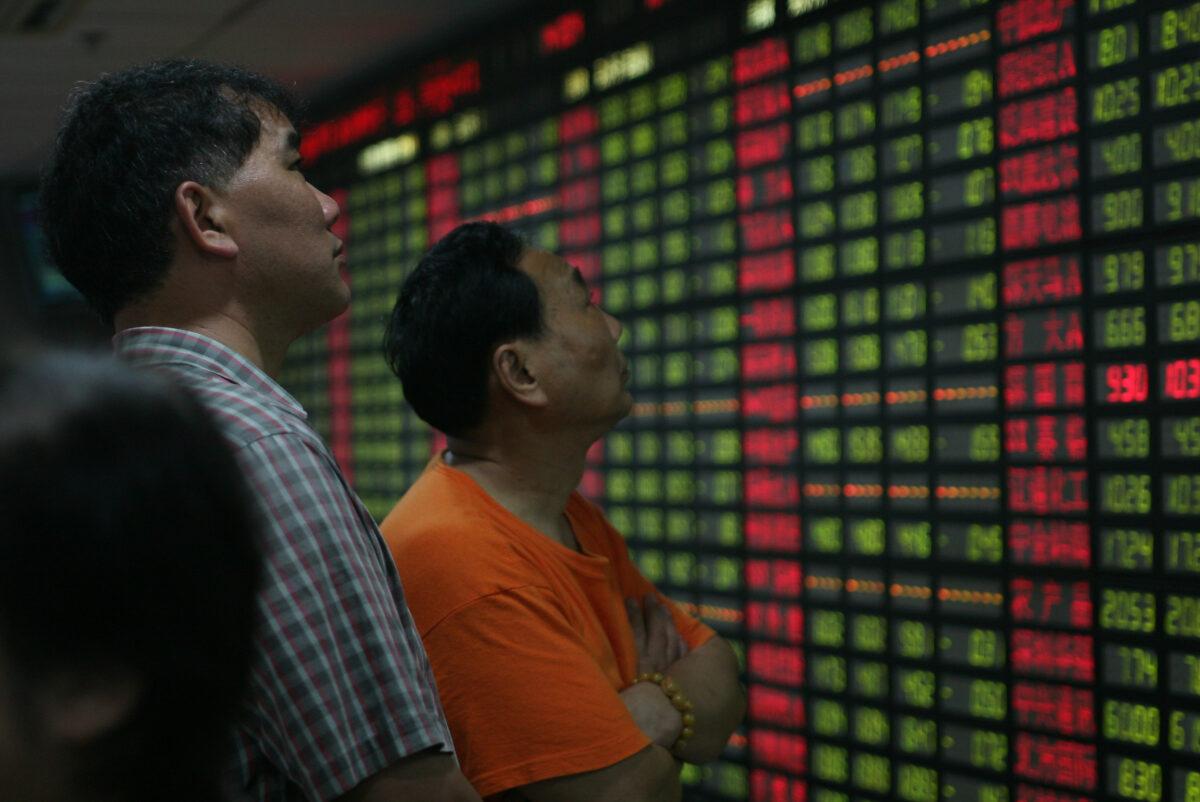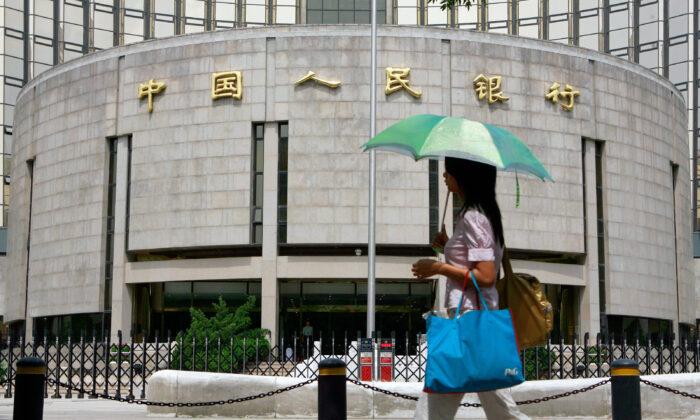China has reportedly added trillions of yuan to the money supply in 2022, the most in its history and equivalent to the combined amount from the United States, Japan, and the European Union. However, the move may have no way to boost the Chinese economy, given a sluggish trend in GDP and a steep dive in the money circulation rate, expert suggests.
M2, a category of broad money, measures a country’s money supply, including cash, savings deposits, money market securities, and other time deposits, which can be seen as a key predictor of inflation.
This additional M2, as part of the PBC’s financial intervention, however, was unlikely as effective in stimulating economic growth of the corresponding magnitude as it has been in the past.
In other words, China’s GDP growth lagged far behind the country’s money supply growth in 2022.
Ma cited U.S. economist Irving Fisher’s equation of exchange, MV=PQ, in which M = money supply, V = velocity of money, P = price of goods, and Q = quantity of goods and services—or, “money supply” multiplied by “velocity of money” is equal to “price level” multiplied by “quantity of goods and services”—that is, the number of goods and services in China shrank seriously in 2022, prices rose slightly (not considering housing price decline), and the money supply increased dramatically, thus, based on the equation, the velocity of money would plunge, Ma said.
The velocity of money is the rate at which the money in circulation is used to purchase goods and services. Low money velocity points to a contracting economy, a dilemma that China is grappling with.

Stock Market, Real Estate, and Funds
Chinese stock market was moving on the track of overall decay last year. As of the close of trading on Dec. 30, 2022, the total market capitalization of A-shares was 84.85 trillion yuan (about $12.35 trillion), a decrease of 11.57 trillion yuan (about $1.68 trillion) from the beginning of the year; A shares dropped by 16.21 trillion yuan (about $2.36 trillion). With the midyear investor population of 206 million, the per-capita loss of stockholders would reach 78,700 yuan (approximately $11,500), according to data by Chinese financial service provider wind.com.cn, Sina reported on Dec.31, 2022.Where Does the Added Money Supply Go?
Throughout 2022, China has put the extra money supply, worth 28 trillion yuan ($4.096 trillion), into the market. Where has that money gone? Who took it away?In a word, state-owned or state-backed enterprises and organs and institutions can borrow money from the bank, and then convert the loans into deposits, or pass it on to associated interests, who in turn also deposit the money in banks. This cycle causes large amounts of money to pile up in banks.
The year 2022 is the year that China’s zero-COVID policy was strictly implemented nationwide, with billions of doses of vaccines, full-staff nucleic acid testing, and the infrastructure of large-scale makeshift hospitals and other interest-related industries consuming astronomical amounts of treasury funds.
Social Finance
Some structural problems can be found in the PCB’s report on the size of social financing in 2022.First, the money supply is strong, but the social financing demand is relatively insufficient, and the phenomenon of capital idling has intensified. Since April last year, the growth rate of M2 has outpaced the growth rate of social finance stock.
Second, in 2022, the share of public financing in the credit market continues to rise, while the share of private financing continues to decline.
Last year, public financing included 4.04 trillion yuan ($580 billion) of special bonds, 740 billion yuan ($106 billion) of policy-oriented development financial instruments, and 800 billion yuan ($114 billion) of infrastructure loans, but these enormous amounts of funds did not leverage the growth of private financing; rather, they led to a decline in the multiplier effect of public investment, adding debts burden and risks.
China’s credit money issuance is essentially a wealth redistribution tool in favour of the ruling communist regime. For example, loan distribution has been particularly skewed toward the governmental bodies and corporations, while the share of labor’s income does not even reach the world average, and was far below that of countries such as Germany, France, the United States, Korea, the United Kingdom, and Japan.






Friends Read Free